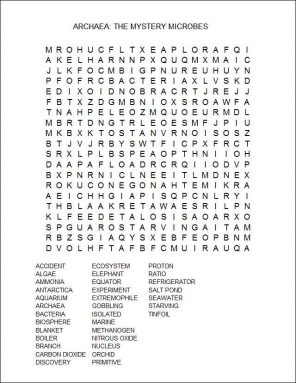Mystery microbes of the sea
What gobbles up millions of tons of poisonous ammonia each year, making the water safe for fish?
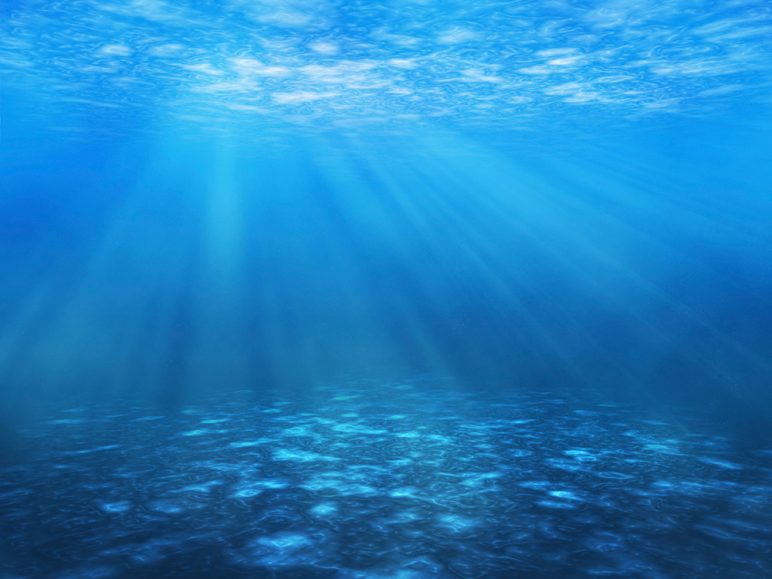
Crystal clear ocean water teems with invisible life. The world’s oceans contain up to 4 billion tons of mysterious microbes called archaea — about equal in weight to all of the fish!
iStockphoto
By Douglas Fox
When Alyson Santoro moved from California to Massachusetts in 2008, she shipped most of her things by truck. But Santoro kept one important item close as she drove across the country. It was a plastic cooler. Four square bottles sat inside, each wrapped in tinfoil. The seawater that sloshed around in them contained millions of mysterious microbes.
Santoro had scooped up the waterborne microbes a year earlier while cruising the Pacific Ocean. They were in the water that she sampled as part of the research for her Ph.D. in microbiology. The two-week cruise had been her first time at sea. And she had worked nonstop, hardly sleeping. Once back home, Santoro shoved the four bottles of seawater into her refrigerator, behind the milk. Then she collapsed and took a nap.
And those bottles remained in the fridge, untouched, until Santoro finally drove across country the next year. She treated each bottle with great care. Every night, for instance, they stayed in her hotel room as she slept along with several delicate orchid plants that she had coaxed into blooming. “They like to be right around room temperature,” she says, of both the orchids and her ocean microbes.
She didn’t know it then, but those microbes would help answer a question that had perplexed scientists for decades: Why don’t huge amounts of rotting waste turn the oceans into one huge, unhealthy sewer?
Santoro believed that the answer lay with special microbes, called archaea (Ar-KEE-ah).
Biologists find archaea a true curiosity. They make up one of life’s three main branches. The two better known branches are bacteria and eukaryotes (u KARE ee oatz). That last branch includes animals, plants and fungi. But archaea have remained mysterious. Very little is known about them. In fact, their unique status wasn’t even recognized until relatively recently, in 1977.
Yet if Santoro was right, these mysterious archaea did a huge job — mopping up a waste that would otherwise poison large ocean species.
Ammonia muncher
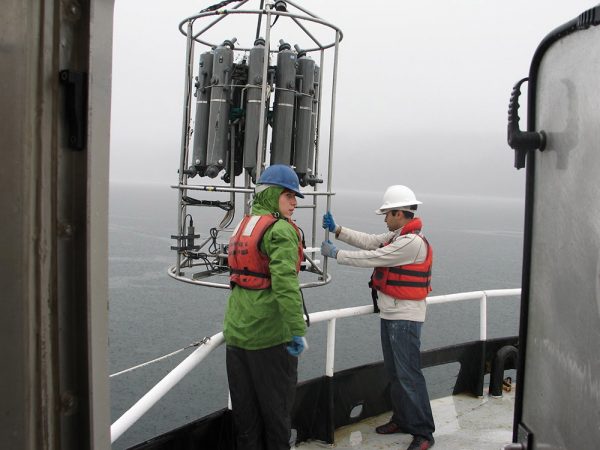
Every day, nearly 100 million tons of fish, mammals, plants and other marine organisms die in the world’s oceans. As they rot, they give off a stinky gas called ammonia (NH3). The same chemical is a familiar problem to anyone who keeps pet fish. “A little bit of ammonia buildup in an aquarium will kill the fish,” notes David Stahl. He’s a microbial ecologist at the University of Washington in Seattle. Too much ammonia in the world’s oceans would be just as toxic.
But harmful levels of ammonia don’t build up in the oceans. For 50 years, biologists have puzzled over what might be removing it. They assumed microbes must play a role. But which ones? After all, the oceans contain millions of different types. Yet only a few of them would eat ammonia.
Santoro was among those hunting for the helpful mystery microbe. She believed that some unknown archaea species must gobble up ammonia as quickly as it forms. And it must convert that ammonia into other chemicals.
These same archaea, Santoro reasoned, might even lie at the center of a second mystery — the source of huge quantities of a gas called nitrous oxide (N2O). Every year, nearly 2 million tons of this gas leave the world’s oceans. Entering the atmosphere, it acts as a potent greenhouse gas. Gram for gram, nitrous oxide absorbs more sunlight — and heats the atmosphere much more strongly — than does carbon dioxide.
No one knew what life-form was behind all of this nitrous oxide. All biologists knew was that this gas carried a strange chemical signature. Just as with the ammonia-gobbling microbe, whatever organism was producing nitrous oxide also was unknown to science.
Santoro believed that an unknown type of archaea was behind both mysteries. It was gobbling up ammonia and belching out vast amounts of nitrous oxide.
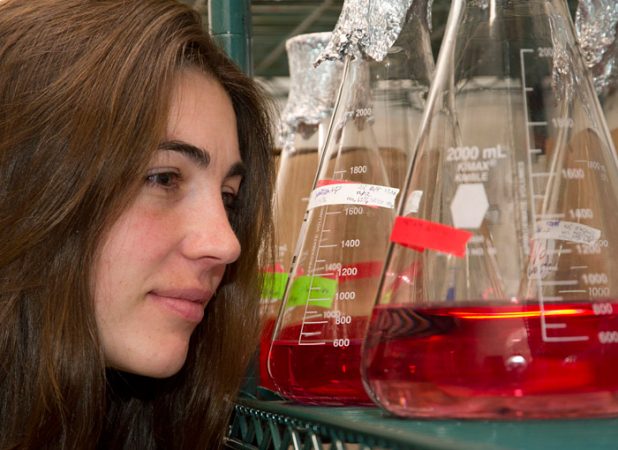
Despite the mystery surrounding it, this microbe might be one of the most common life-forms on Earth. Yet for many years, biologists could not study it. The reason: They simply could not get it to grow in the lab.
Hard to grow
Suppose you have an unknown seed. You can find out what type it is by sticking it in soil, watering it and waiting to see what type of plant sprouts. For a long time, biologists identified mystery microbes in much the same way. They’d place them in little glass bottles or Petri dishes and feed them. Once they had enough of the microbe, they could identify its genes. Or they could do experiments to see what it eats and how it lives.
Growing microbes is a lot like growing orchids or other tricky houseplants, observes Santoro, who now works at the University of Maryland Center for Environmental Science in Cambridge. You have to try various temperatures and menu options.
Those bottles of seawater that Santoro collected might have contained a million different types of microbes. But 99 out of every 100 had never been grown in a lab before.
“There is a vast world of microbes out there that don’t want to live in our zoos,” quips Edward DeLong. He’s a microbial ecologist at the Massachusetts Institute of Technology in Cambridge. The microorganisms’ refusal to grow in the lab puzzles scientists. It also prevents researchers from understanding how microbes shape the environment.
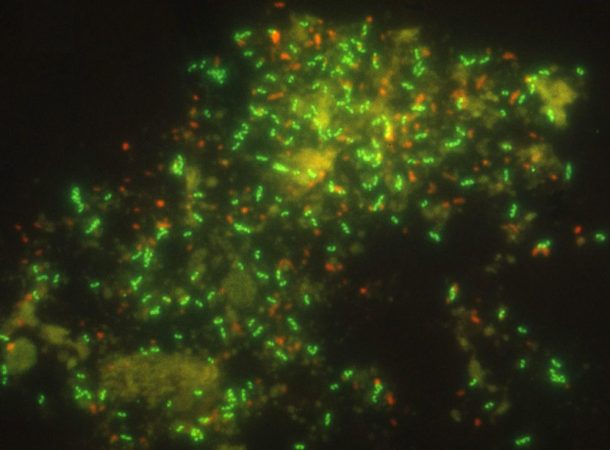
Say you want to study a common ecosystem. Maybe it is the web of plants, animals and other organisms that inhabit deserts of the American West. You can recognize which species are most common simply by camping out on a hilltop. You might figure out pretty quickly that in many places both tortoises and rabbits are quite common.
If you do some experiments, you might learn how each survives the desert. Rabbits grow and multiply quickly. So in good years, when there’s a lot of food, their numbers skyrocket. Tortoises grow slowly, but they need very little water and food. So tortoise numbers change slowly throughout good years and bad.
Cultivating tortoises
Studying communities of ocean microbes, as Santoro does, is far more challenging. The very act of looking at a microbial ecosystem by growing it in the lab can change it. And no scientist can predict how it will change.
Conditions in a glass bottle are almost always different from those in the real ocean. Maybe the bottle’s water contains much more food. This could fuel the growth of microbes that might be the ocean’s version of a desert’s rabbits. Such “rabbit” microbes could crowd out the ocean’s slow-growing “tortoises.” So even if you started out with equal numbers of rabbits and tortoises in your lab experiment, you might quickly end up with zillions of rabbits. And no tortoises!
This is one reason that lab researchers sometimes overlook the microbes that are most common in nature. Scientists who sought to find out what was eating ammonia in the ocean faced this problem. Ammonia-munching microbes were probably very common — but they grew very slowly. So how could biologists grow enough of these “tortoises” to study?
Santoro solved that problem by accident. After putting her water bottles in the refrigerator in 2007, she forgot about them. So they never got any more food. Vast swaths of the ocean are like a desert, with very little food. By re-creating the ocean’s desert in her refrigerator, Santoro had made life tough on the microbes.
By the time she finally opened the bottles in February 2009, the microbes had gone a year and a half without food. They must have been starving!
But that was just what her tortoises needed.
The survivors
DNA tests showed that most of the bottles’ microbes disappeared during their 18 months without food. Over that time, rabbits of the ocean’s microbial world had starved. Only the slow-growing tortoises remained. These were mainly archaea. At first glance, archaea resemble bacteria. They are about the same size. They often have the same ball and rod shapes as bacteria when seen under a microscope. But archaea are entirely different organisms.
Santoro grew her surviving tortoise microbes for another year. During that time, she fed them tiny amounts of ammonia — but none of the chemicals on which most other microbes depend. And slowly, her ammonia-munching archaea grew. As they dined on ammonia, they burped up small amounts of nitrous oxide gas as a waste product.
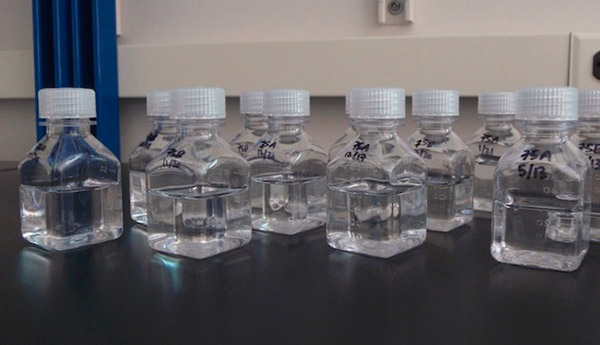
By mid-2010, Santoro had enough of her archaea to do an experiment. As they grew, she siphoned off the nitrous oxide for her tests. Santoro was hoping to solve the mystery of what was making nitrous oxide in the ocean.
Chemical fingerprint
Nitrous oxide bubbling out of the ocean has an unusual chemical signature. Santoro wanted to see if her archaea made nitrous oxide with a matching chemical signature. It would hint that they were the source of the gas.
Atoms of some elements, such as the nitrogen and oxygen that make up nitrous oxide, come in so-called light and heavy forms. And the nitrous oxide seeping out of the ocean has an unusual proportion of such “heavy” atoms. They define its characteristic signature.
Have you ever cracked open an egg and found two yolks, instead of just one? Atoms are kind of like that. A few atoms have one or two extra neutrons (a type of atomic building block) at their center. Nitrous oxide that leaves the ocean has a very specific signature: 369 out of every 100,000 nitrogen atoms and 209 out of every 100,000 oxygen atoms in it are “heavy.” They possess an extra neutron or two. Nitrogen and oxygen in other places, such as Earth’s atmosphere, also include a few heavy atoms. But in nitrous oxide from the ocean, these heavy atoms are more common. This odd signature provides a clue about what might be burping up the gas.
Other scientists had already grown ocean bacteria that eat can ammonia and make nitrous oxide. But when Santoro grew these same bacteria in her lab, they produced nitrous oxide with too few heavy atoms. None breathed out a gas that “looked like the nitrous oxide in the ocean,” she says. So their exhaled breath just didn’t match.
But the breath of Santoro’s archaea did match. Its nitrous oxide “has a composition very similar to what we measure in the surface ocean,” Santoro says. This suggested that archaea, and not bacteria, make much of the nitrous oxide bubbling out of the ocean.
So these long-overlooked microbes aren’t just eating ammonia. They also are exhaling vast amounts of a potent greenhouse gas.
Levels of nitrous oxide in the atmosphere have been increasing steadily. It isn’t happening because the microbes are doing anything bad. Instead, it is happening because people are changing the planet. Heavy use of nitrogen fertilizers on farms, for example, allows more ammonia to run off into the oceans. There, mindless little archaea munch up the extra ammonia. And one result: They belch out more and more nitrous oxide.
If scientists know which microbes are actually making this greenhouse gas, it could help them predict how quickly levels of nitrous oxide — and global temperatures — will rise in the future.
Strangers amongst us
Santoro’s discovery followed earlier breakthroughs by others, including Stahl and DeLong. Many such discoveries have come only in recent years. Forty years ago, scientists didn’t even recognize that archaea belonged to a separate branch of life. Biologists thought they were simply oddball bacteria.
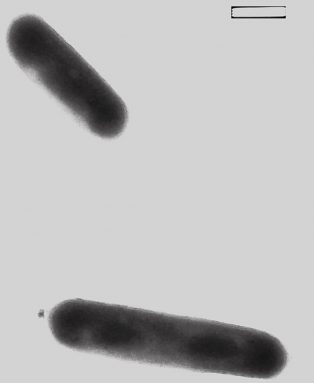
But when scientists looked at the microbes’ DNA, a different story emerged. Archaea had little in common with bacteria — or any other living things.
In fact, to say archaea are bacteria would be like saying an elephant is a type of tree. The genes of archaea set them even further apart from bacteria than an elephant is from an apple tree. “They are as different as we are from bacteria,” says Norman Pace, a biochemist at the University of Colorado at Boulder.
Archaea can survive very extreme conditions. Some live in boiling hot springs. Scientists have found others in salt ponds. These microbes even dwell in rare streams of acid-rich water that flow out of polluted mines. “Archaea are a strange group,” concludes DeLong at MIT.
Because they can tolerate extreme conditions, archaea quickly became known as critters of last resort: They lived in nooks and crannies of our planet too harsh for other species to survive. Biologists wondered whether archaea might even be a primitive holdover from life on early Earth. They seemed like dinosaurs of the microbial world — ones that more modern organisms had mostly pushed aside. Finding them in a few odd, unpleasant corners of the planet seemed to confirm this. Even their name comes from arkhaios, the Greek word for ancient.
But that reputation has proven wrong. Today, scientists know archaea are far from minor players, barely eking out a living in Earth’s most isolated places. Instead, archaea live everywhere, not only on the ocean floor but high on dry land too. Archaea even live inside the guts of people. Scientists have debated whether the archaea there might influence whether we are skinny or fat. The latest data don’t support archaea as affecting weight. But they do offer evidence that archaea can help digest dietary fiber, which can offer health benefits. Researchers at the University of Toronto and a Canadian hospital describe their findings in the August 2013 Journal of Nutrition.
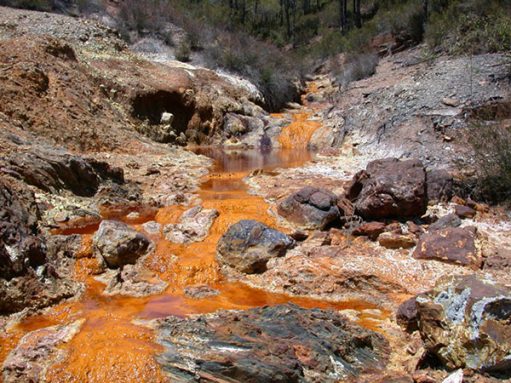
In the ocean, archaea are one of the most common living things. It is something DeLong discovered in 1992. Below the reach of sunlight, 50 meters (164 feet) down, “these guys can represent maybe 20 to 30 percent of all cells,” notes DeLong. By weight, the oceans contain about as much archaea as they do fish — up to 4 billion tons’ worth.
But most of those archaea in the ocean (and everywhere else, for that matter) are still unknown to science. A July 2013 study published in Nature discovers four new major branches within the archaea tree of life. It’s easy to think of these branches as being like tiny twigs on an oak tree. In fact, they are big, important limbs. Each of the four is as large as the branch of life that people know best: the branch (called chordate) that contains all animals with backbones — including everything from people and mice to elephants, birds, reptiles and fish!
Still, when DeLong first found archaea in the ocean, he had no idea of their role. It has taken 20 more years for DeLong, Santoro, Stahl and others to realize that these long-ignored microbes are major consumers of ammonia. They also may generate much of the planet’s nitrous oxide. In doing so, they play large roles in regulating the chemistry of Earth’s oceans and atmosphere.
Archaea escaped notice in part because biologists could not grow them. Starting with the oceans, this once-invisible group “all of a sudden looks like a major player,” says DeLong. At last, archaea are finally gaining the respect they deserve.
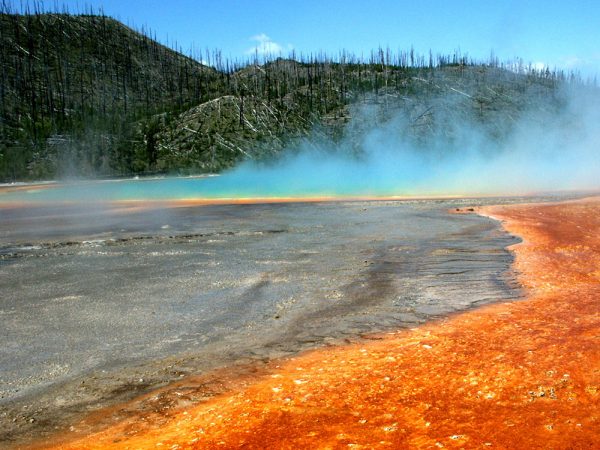
Power Words
acid A type of chemical that is capable of corroding, or eating away, at some metals. It can also cause burns if it comes into contact with the skin, eyes or certain other tissues.
ammonia A strong-smelling gas composed of one nitrogen atom and three hydrogen atoms.
animal A living organism that belongs to the kingdom of life called Animalia. Animals include mammals, reptiles, birds, insects, worms and fish.
aquarium A tank of water used to keep fish, corals or other aquatic life.
archaeon (plural archaea) A domain of life that includes single-celled organisms. Although archaea superficially resemble bacteria, they are distinct. Archaea inhabit many harsh environments.
atom The smallest building block of a chemical element. For instance, a molecule of water has one atom of oxygen bound to two atoms of hydrogen.
bacteria Simple, single-celled organisms that inhabit most environments on Earth.
biosphere All living things, and the environments they inhabit.
ecosystem The interdependent web of organisms — ranging from tiny microbes to plants and large animals — that inhabit any place. Examples of ecosystems include prairies, swamps, rainforests and deserts.
microbe Any organism that is microscopic, or too small to be seen by the unaided eye. These include bacteria and archaea.
neutron A basic building block of the atoms that make up every chemical element. An atom of oxygen usually contains eight neutrons; an atom of nitrogen usually contains seven neutrons.
nitrous oxide A gas composed of two atoms of nitrogen bound to one of oxygen. Some microbes that feed on ammonia produce this chemical as a waste product.
orchid A plant with flowers having three petals that are often showy. Orchids are grown as houseplants, but often require very special conditions to grow and bloom.
organism Any living thing.
tortoise A turtle that lives on land, often in dry places, such as deserts.
